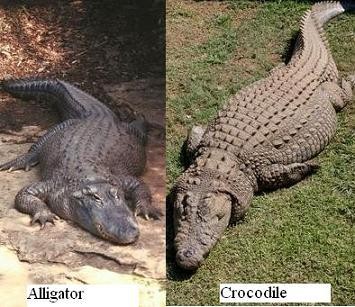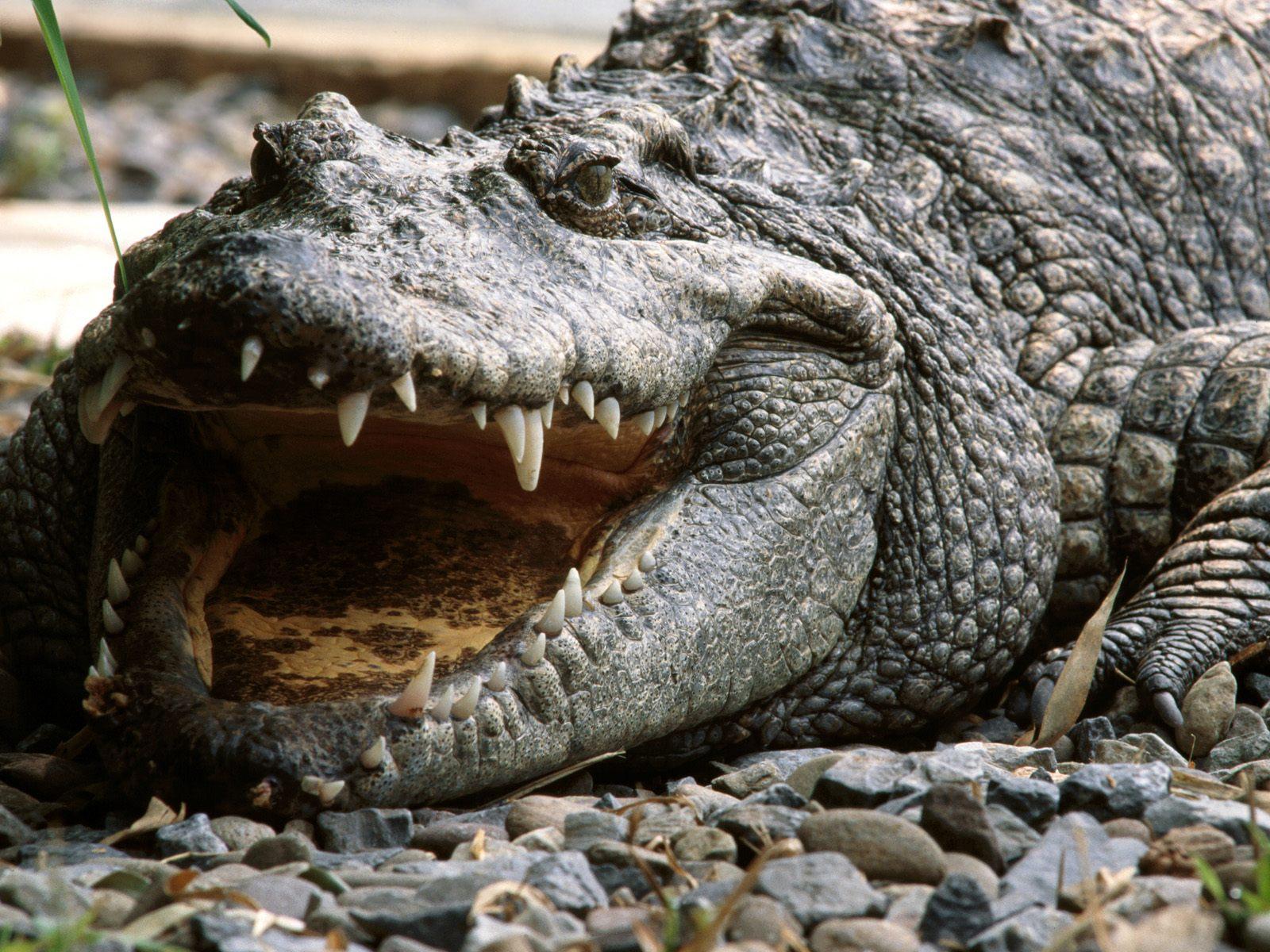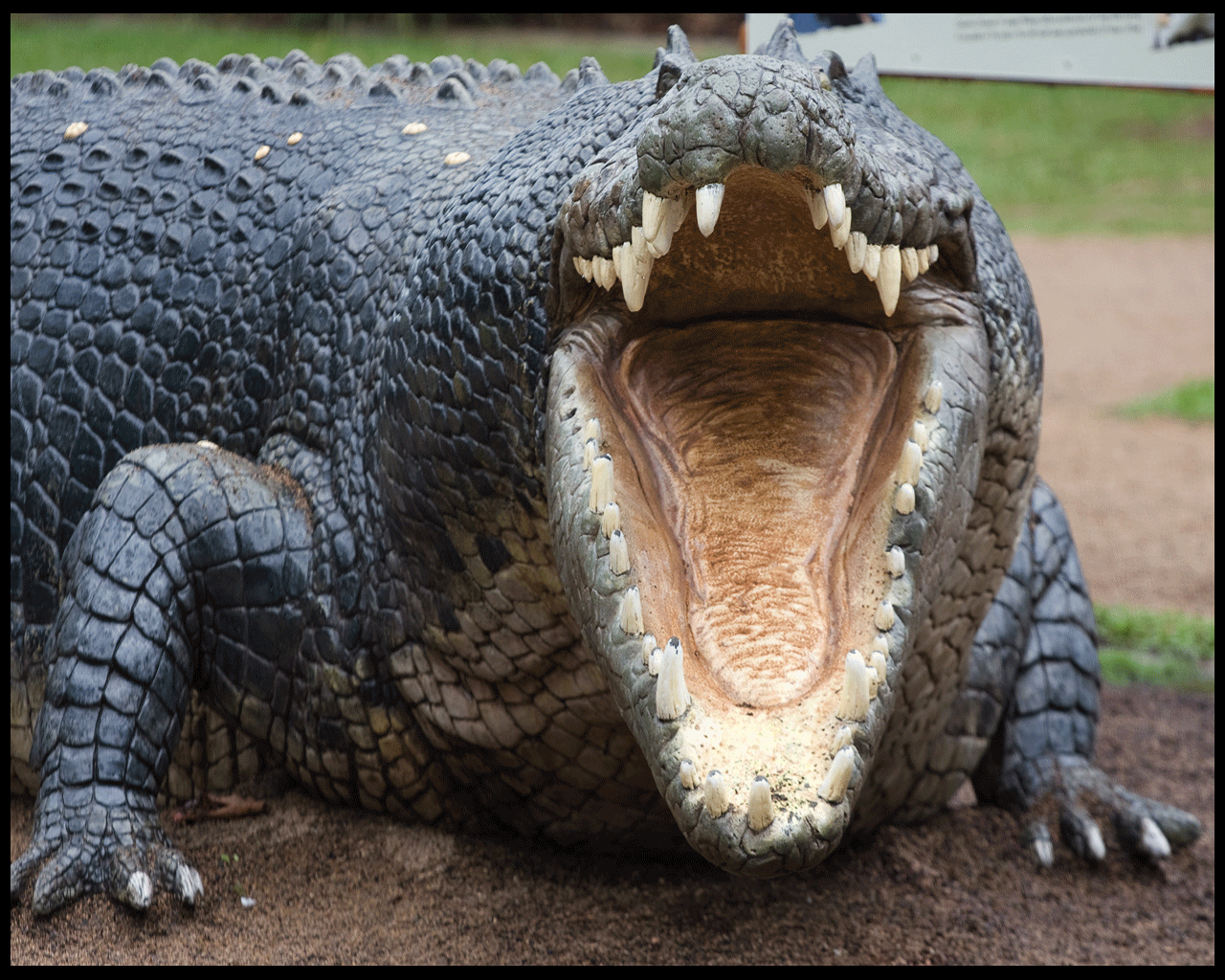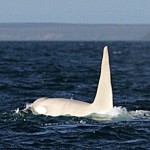Difference Between Alligator and Crocodile

Both reptiles with notorious reputations, alligators and crocodiles often get mixed up and mistaken for each other. However, while both belong to the reptilian order Crocodylia, there are several distinguishing features that set the two apart.
Belonging to the crocodylidae family, crocodiles are partial to saltwater habitats, while alligators belong to the alligatoridae family, and tend to live in freshwater marshes and lakes. In the wild, crocodiles are generally found all over the world, most particularly in certain parts of Africa, North America, South America and Asia – alligators in the wild, however, can only be found in China, the US, and South America.
Instructions
-
1
The main distinguishing features between both reptiles, however, have to do with their appearances, and their snouts and jaws in particular. Crocodiles are noticeably lighter in colour, and have a distinctly narrow snout that is pointed and V-shaped, while alligators are darker in colour, with snouts that are broader and more U-shaped.
In addition, both reptiles can be told apart by studying their jaws. A crocodile’s upper and lower jaws are both equally wide, so the teeth close in an interlocking fashion. They are also known for their large fourth teeth on the lower jaw, which stick up and out even when the mouth is closed. Alligators, on the other hand, have an upper jaw which is wider than the lower jaw – this causes the teeth in the lower jaw to fit snugly in the sockets of the upper jaw. -
2
Alligators
Belonging to the alligatoridae family, alligators come in two types – the American alligator, and the Chinese alligator. Having first appeared nearly 37 million years ago, in the Oligocene epoch, alligators are large reptiles that can live for upwards of 75 years. American alligators can grow up to 4.0 m (13.1 ft) long and weigh 360 kg (790 lb), while the Chinese alligator tends to be smaller, growing to an average length of 2.1 m (6.9 ft). During their youth, most alligators tend to feed on small fish, insects, snails, crustaceans, and worms; however, as they mature, they start feeding on larger prey, such as big fish, turtles, mammals (particularly nutria and muskrat), birds, deer, and even other reptiles.
Native to the United States and China alone, most alligators live in freshwater and brackish environments, while the Chinese alligator, which is exceptionally rare and an endangered species, can be found in the Yangtze River valley alone.

-
3
Crocodiles
Crocodiles are scientifically described as large aquatic tetrapods, that are genetically related to birds and to dinosaurs – having come onto the scene nearly 55 million years ago, crocodiles first appeared during the Eocene epoch. The average age for a crocodile is 70 years, although certain specimens have also lived up to 100 years. Certain species of crocodiles grow up to 1 m (3.3 ft) to 1.5 m (4.9 ft), while larger species can grow up to 4.85 m (15.9 ft), and weigh 1,200 kg (2,600 lb) or more.
Vicious cold-blooded predators, crocodiles are ambush hunters, and wait just below the surface of water for birds and land animals to come closer, before springing out to attack. Their diets generally consist of birds, fish, mammals, and even smaller crocodiles.







